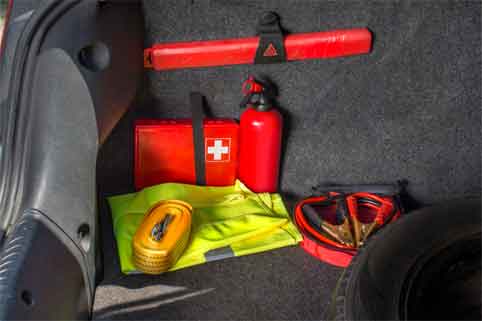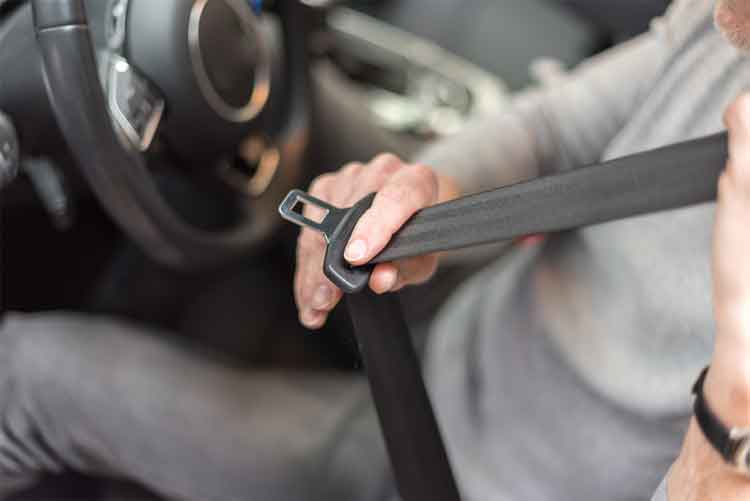In this article I will discuss a bit more technical mumbo jumbo while trying to keep it simple.
Lets say you want to tackle changing your own brake system. Buying a manual for the make and model of your car is a recommended first step. I am not talking about a manual that you would find in the glove compartment that is found in cars when you buy them new. I am talking about a manual that is thicker and more detailed, like a Chiltons manual for example. These can be found at most automotive parts stores and most carry many that cover the worlds most popular manufacturers vehicles and can range in price from twenty to sixty dollars. They usually come with handy diagrams and some step by step instructions on how to do many basic and complex repairs to a vehicle.
With that said, lets get back to trying to seeing if I can explain it to you in a clear and simple manner.

Step one is to remove the tire from the vehicle. Most of the generic manuals you find in the glove compartments of a car give pretty good instructions on how to do this. The key is to try and work on the car on a level piece of ground and if that isn’t possible, be sure to place a rock or brick or something around another wheel to keep the car from wanting to roll. DO NOT SET THE PARKING BRAKE IF YOU ARE REPLACING THE REAR BRAKE PADS. Also make sure that the jack is positioned securely and the car will not fall off of the jack as you are working on it. That would be a very bad thing.
Once the wheel has been removed you will notice a round, shiny thing (the rotor) which had a big funky looking thing on the top or side of it (the caliper). The next step is to remove the caliper. The caliper is usually held on by two bolts (slide bolts) which can be located on the backside of it. Sometimes these bolts will have a rubber cover on them and sometimes they won’t. Also, sometimes these bolts will have a regular type bolt head to them and sometimes they will have an “innie” type of bolt head. An innie means like a belly button…the bolt head is recessed. This type of bolt requires an Allen wrench to remove. Allen wrenches are those six sided tools that are shaped like an “l” and are usually needed to put certain types of furniture together, like home entertainment centers, baby cribs, etc. If you need an Allen wrench to remove your caliper and you don’t have one, stop and go to the store and get one. Do not try and take the bolts out with a pair of pliers or a screw driver. Also, if you don’t have a six inch or larger C-clamp…get one of those as well.
After the bolts on the caliper have been removed it is time to remove the caliper from the rotor. That is done by simply sliding the caliper off the rotor in an upwards motion. It may be a little tight so some giggling might need to be done and a little muscle. It is good practice to refrain from using a pry bar or other type of leverage device to remove the caliper because you may damage some important parts.
When you have successfully removed the caliper from the rotor, be careful as to not kink or damage the rubber brake line. Use a wire to tie the caliper up or find a spot where you can set the caliper down so that there is no tension on the brake line.
From here it gets to be pretty visual to remove the pads. The brake pad that faces the outside of the vehicle is the one you want to take off first. It is usually held in place by pieces of metal that snap over the caliper in some way, shape or form and uses tension to hold it in place. Carefully remove the front brake pad and try not to cut yourself. Once it is off, it is time to remove the rear brake pad. This one usually has a tension device that locks it in and it is usually locked into the center of the piston. Pull the brake pad towards the direction of where the brake pad was that you just took off. It should just snap out fairly easily. Make visual notes or even draw a sketch or take a picture of how these look before you took them off in case you get confused later on.
Now…if you have no brake pads on your calipers you are doing quite well. Give yourself a pat on the back.
It is now time to remove the old rotor. I recommend that you replace your rotors with new ones. Some people choose to take their existing rotors to a shop and have them machined, which is basically grinding them down to a smooth surface. It is cheaper but if they need to be ground down too much then you will be required to replace them with new rotors by law. My personal preference to replace them on the spot is simply because it is my car and my life in jepordy and I would have better peace of mind if I knew my brake parts were new. NEVER EVER replace the pads without either replacing the rotors or having a new surface ground onto them. The fresh, flat surface of the new pads against the old bumpy surface of the old rotors will cause that pulsating feel in the brake pedal and will also affect the stopping distance of your vehicle.
Once the rotor is off, it is time to install the new pads. Before doing this, it is necessary to make room for them and the piston on the caliper has to be pushed back into its home. On the back of the caliper is a round thing that is sticking out. It has a rubber ring around it. That is the piston. Here is where the C-clamp comes into play. First, remove the lid from the brake fluid reservoir. That is the rectangular thing on the firewall that I discussed in part one. By removing this it will allow the fluid to move without being under pressure. Next, take the C-clamp and carefully place one end of it on the back of the caliper and one end of it in the center of the piston and begin turning the C-clamp handle until the piston is pushed completely into its home. Take care that you do not damage the rubber ring around the piston, because if you do, then you will need to replace the caliper…not cheap.
Once the piston has been retracted, install the rear brake pad in the reverse fashion from which you took it out. DO NOT USE A HAMMER!!! Push it in place by hand. Then install the other brake pad in the reverse fashion from which you removed it. Now take the rotor and be careful not to touch the surface of it. Hold in by the sides and do not drop it because it will be ruined if you do. Place the rotor where it should go and gently slide the caliper back onto it. If the caliper does not slide on fairly easy, don’t force it. Take the pads out again and double check that the piston is pushed back in all the way.
Next, bolt the caliper in place. Sometimes you have to giggle the caliper around a bit in order to get the bolt in properly. Take care not to cross thread the bolt or get it in the hole crooked and strip it out. If you can’t giggle the caliper and turn the bolt easily with your fingers, it is probably starting to go in crooked so back it out and try it again. Once you have one bolt started, do not tighten it down all the way until the other bolt is started. After they are both bolted down into place, give the pads and rotors a good bath with brake parts cleaner to remove any dust that may have gotten on the equipment. Remember…brake parts cleaner, not brake fluid.
Put the tire back on and viola!!! You have completed half of a brake job!!! Now you have to do the other side. Never replace just one brake. Always replace in pairs. That means replace both front brakes at the same time or both back brakes at the same time. Or you can do all four at the same time. Front brakes wear down faster than back brakes because during braking they are taking the majority of the load. Once with both brakes, check the level in the brake fluid reservoir and it should be near full again. If it is overfull, be sure to take the fluid out. This is where an old syringe can come in handy. If it is under the fill line, add fluid to it. Replace the cap and smile. I hope this helps and lets the novice become less intimidated of brake noises and brake jobs. If you have any questions feel free to contact me.











 What Causes Monocular Diplopia?
What Causes Monocular Diplopia?